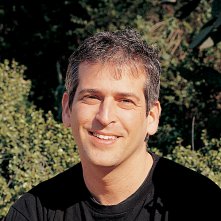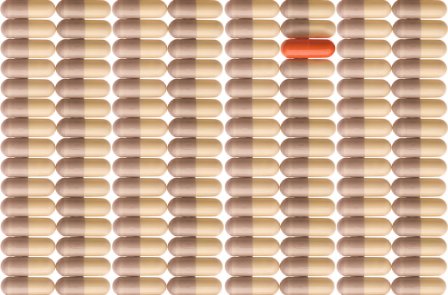
In the future, the practice and precision of medicine may be very different from what they are today. Prof. Uri Alon of the Department of Molecular Cell Biology at the Weizmann Institute of Science foresees a future in which medicine is predictive, personalized, accurate, and rational. In fact, he has already begun to set the groundwork for this transformation by identifying common recurring patterns in the way proteins interact, and developing a novel method for essentially spying on living cells as they undergo chemotherapy.
Prof. Alon received his Ph.D. in theoretical physics, but was also fascinated with biology. These dual interests resulted in his being one of the first scientists to explore a field now known as systems biology, in which biology, computer science, mathematics, chemistry, and physics are integrated in order to understand organisms as complete systems.
Cells contain thousands of proteins, similar to, as Prof. Alon puts it, a very complicated story with thousands of characters. Yet he and his research team were able to decipher the intricacy by focusing on transcription factor proteins, which control the expression of genes, in the bacteria Escherichia coli (E. coli). The scientists reduced the vast tree of chemical reactions to a simple collection of four kinds of recurring patterns, known as network motifs. Each network motif carries out a specific function, or computation, and represents an elementary way that these proteins interact. "The same network motifs, the same patterns, were found in bacteria, plants, flies, mice, humans, and all organisms," says Prof. Alon. "Therefore, there is a shared language, not only in our genes, but also in the way that they are wired together to make cells live or die properly."
Armed with this improved understanding of protein interactions, Prof. Alon set his sights on medicine. Specifically, he looked at cancer and why some human cancer cells respond to chemotherapy by dying, while others survive it, allowing the cancer to live on.
For several years, Prof. Alon and his research team worked with identical (from the same parental cell) lung cancer cell lines in order to analyze the activities of about 1,000 proteins inside the cells. They looked at the activities of single proteins inside single cells, instead of creating and analyzing a mixture of millions of cells. Time-lapse fluorescent microscopy was used to obtain movies of the proteins over several days, as the cells responded to a chemotherapy drug. The team also employed a protein-tagging strategy that made cells more identifiable by image-analysis software, and ultimately were able to measure the levels and locations of proteins in individual cells.

Prof. Alon's innovative technique gave him an unprecedented view, leading him to discover that most proteins behaved the same in cells that survived or died. However, two proteins in this experiment showed remarkable behavior. Cells that started making a lot of these two proteins survived; cells that did not, died. In addition to the chemotherapy drug, Prof. Alon's team also gave the cells a reagent that stopped the production of these two particular proteins, and found that when the cells could no longer make those proteins, they died much faster. "With this method, you can identify molecular differences from cell to cell, and also a way to overcome these differences," says Prof. Alon. His research is now focused on creating drug combinations, or cocktails, using time and dose combinations, mathematical models, and experimental methods that can take cells from the sick state to the healthy state, effectively acting as a "hospital for cells."
This new method of cellular espionage signifies progress toward Prof. Alon's vision of future medicine, in which doctors will one day have access to the blueprint of an individual patient's cells. Using this blueprint, doctors could practice preventive medicine, based on a person's predisposition for a particular illness or condition, and prescribe individualized drug cocktails that will be effective in that particular patient.
"In this kind of blueprint analogy—which is very rational—we know exactly what each drug is going to do to a particular person. We won't be guessing, but, rather, understanding why drugs work on one person and not another," explains Prof. Alon. This transformation in medicine still requires more basic research, modifications in the way doctors are trained, and fundamental changes in drug development; however, Prof. Alon is not the only scientist who foresees that it will be economically beneficial and applicable not only to diseases, but also to other aspects of human physiology, such as aging.
Prof. Uri Alon's research is supported by the Kahn Foundation and Keren Isra-Pa'amei Tikva.
